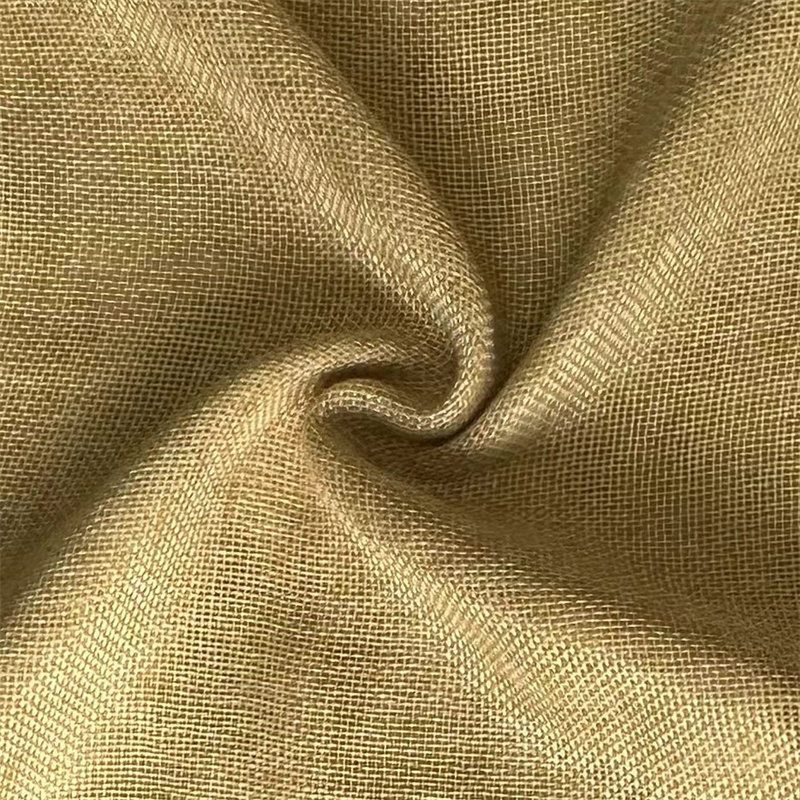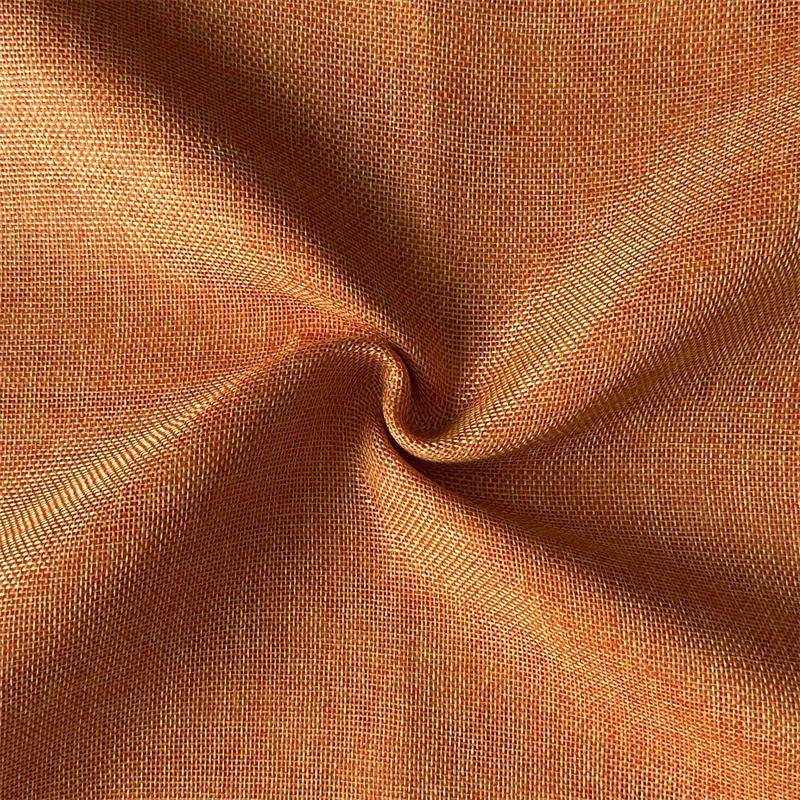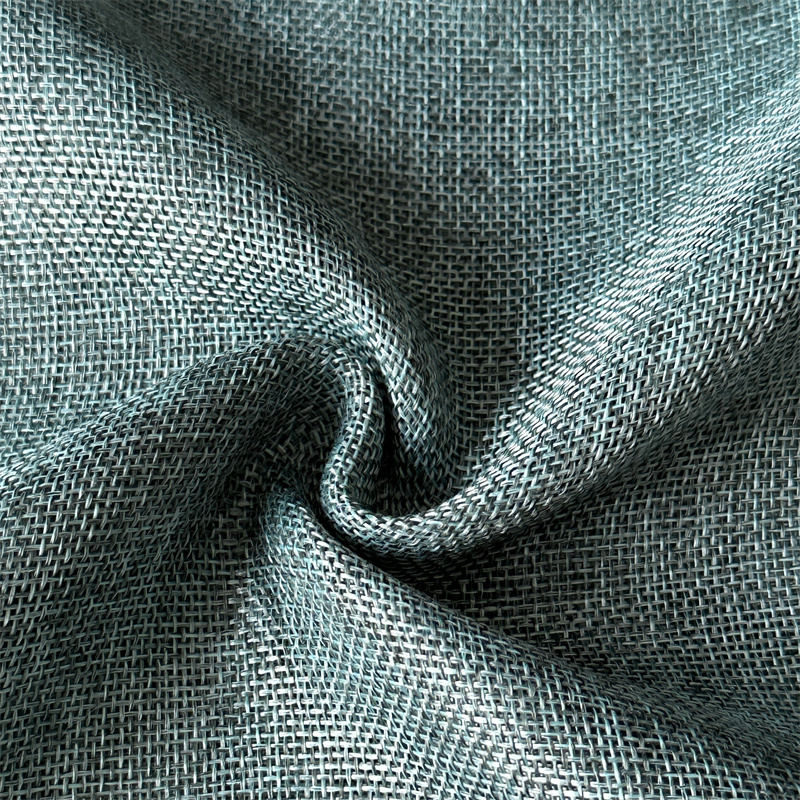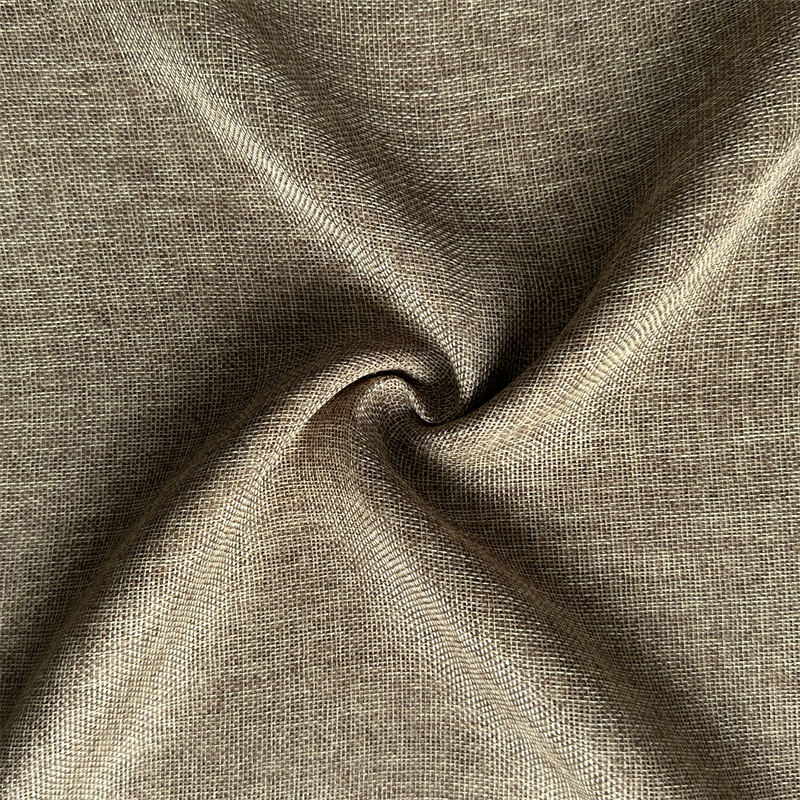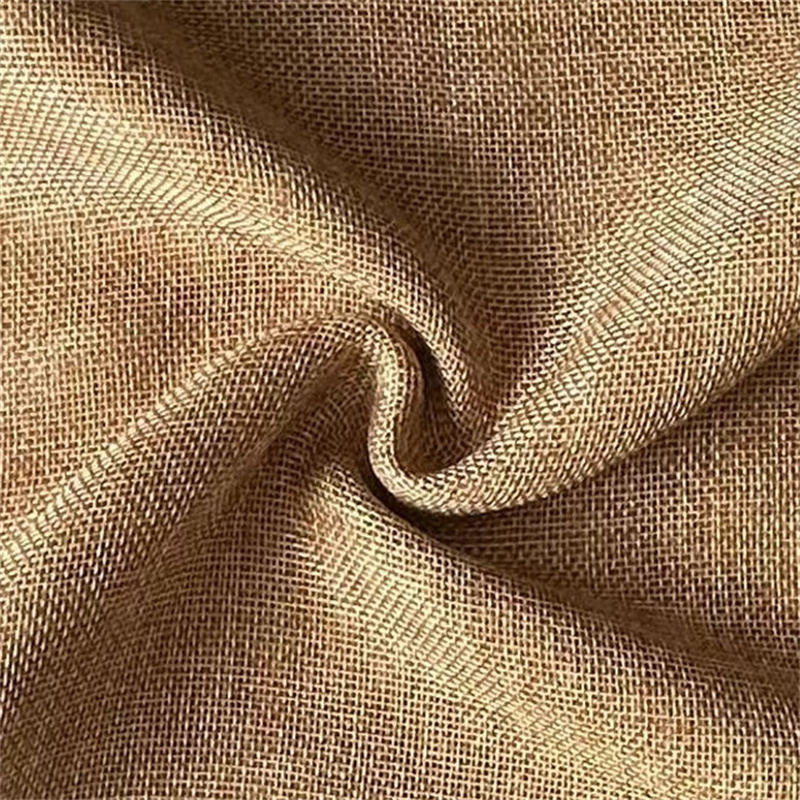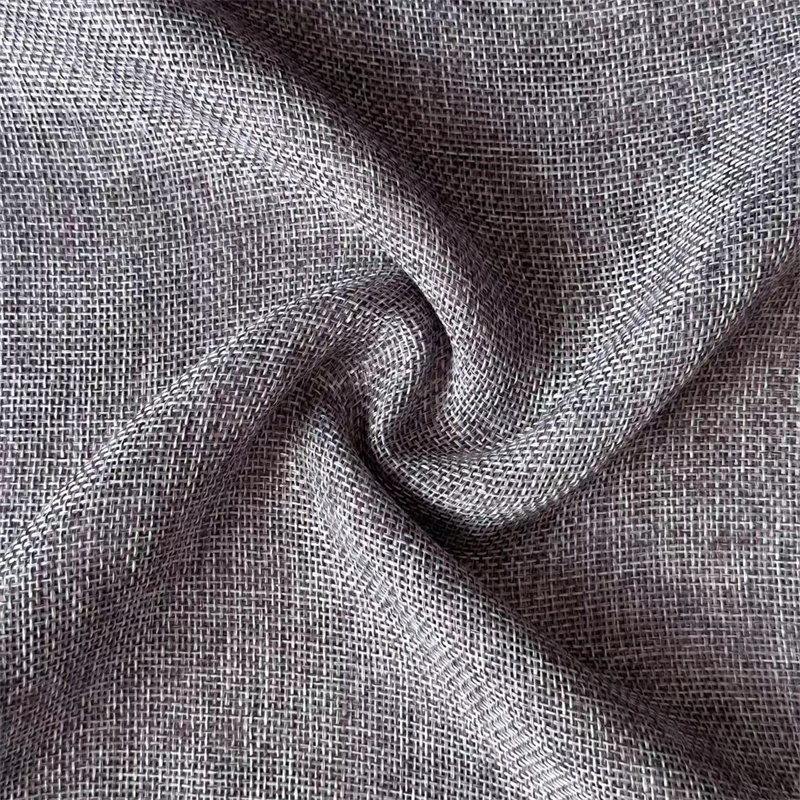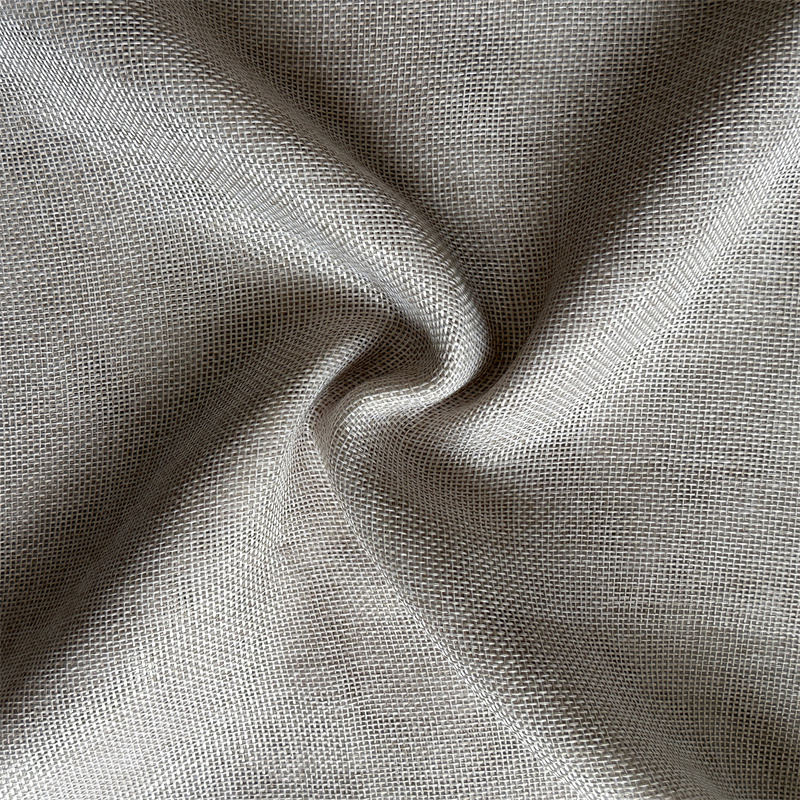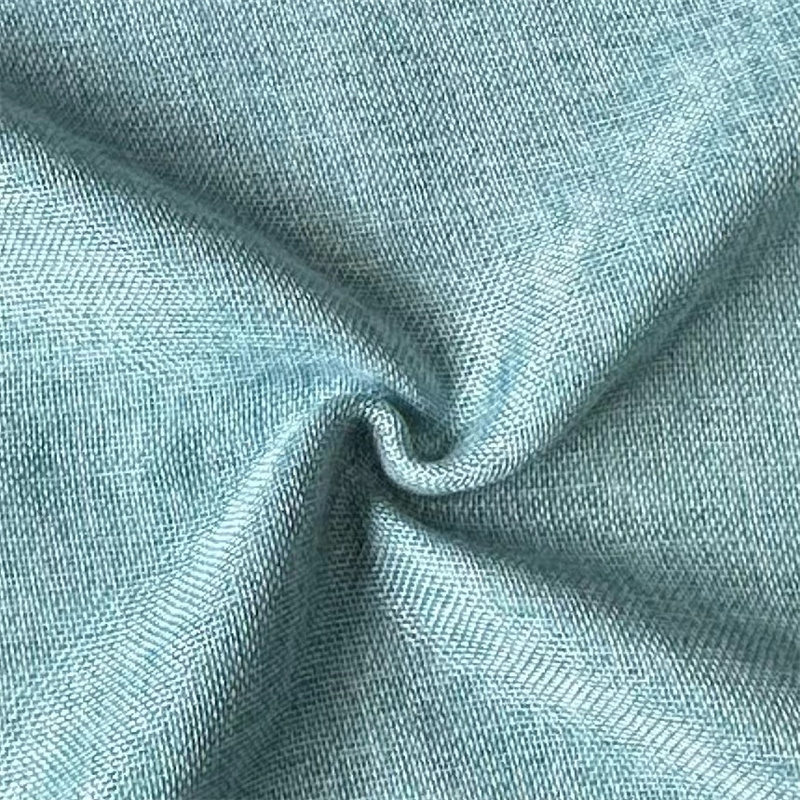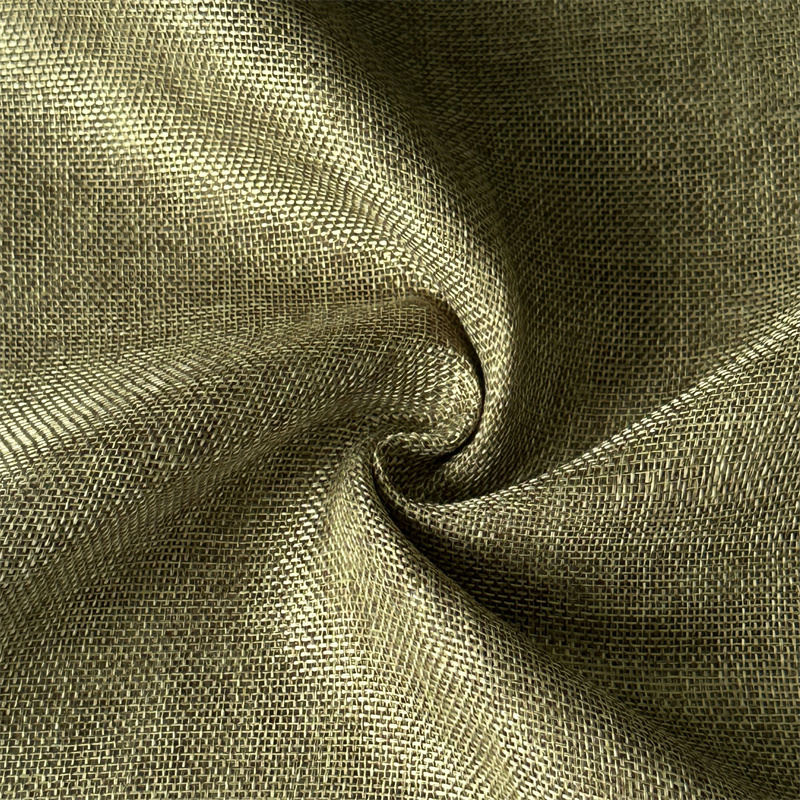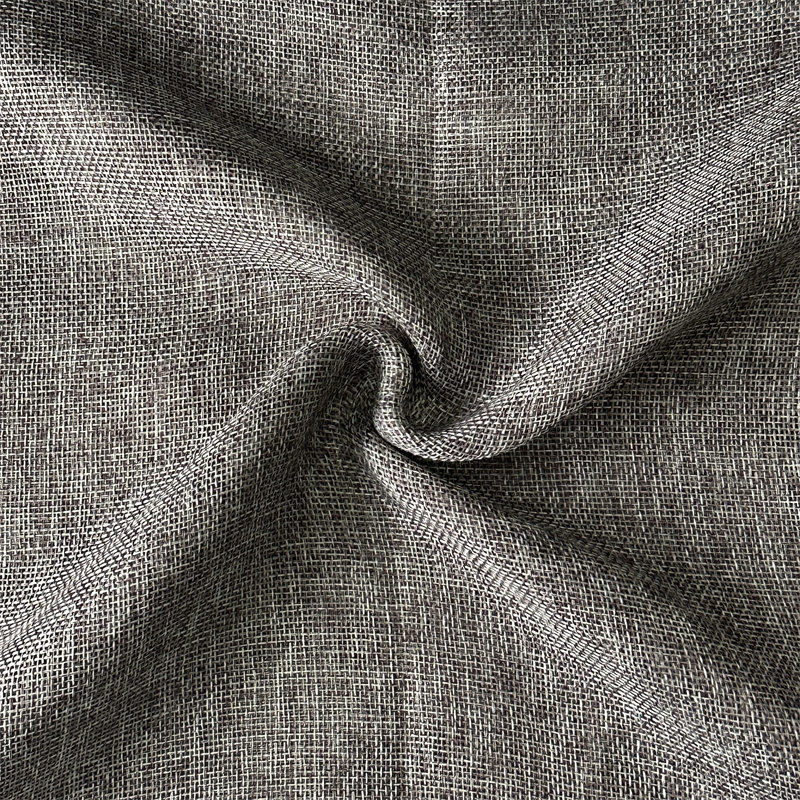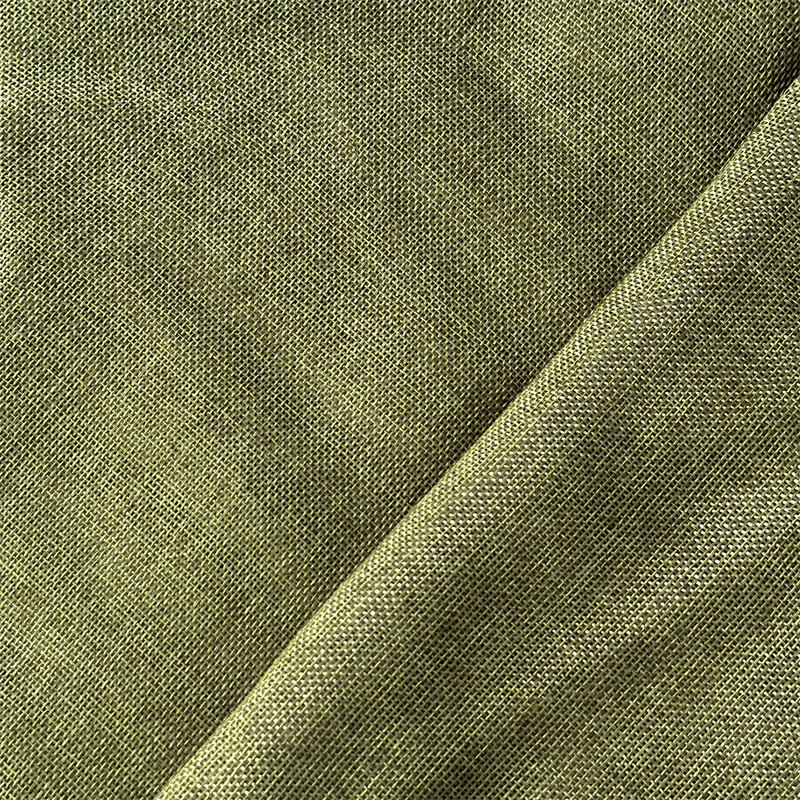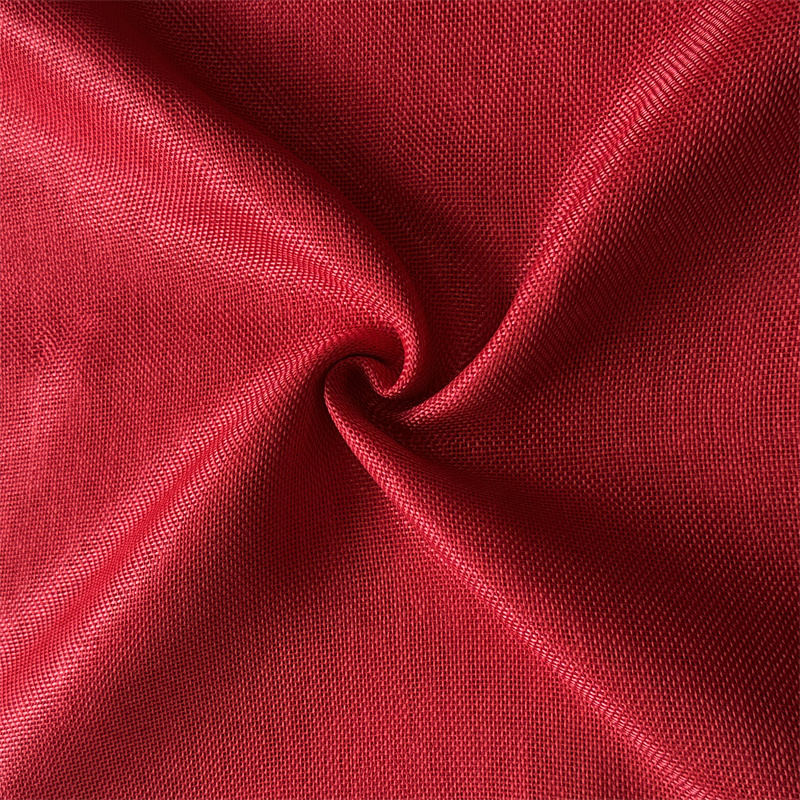Polyester linen fabric has become a popular choice in both apparel and home textiles due to its unique combination of natural aesthetics and synthetic performance. By blending polyester, a durable and wrinkle-resistant synthetic fiber, with linen, a natural fiber known for breathability and texture, manufacturers have created a fabric that balances style, comfort, and practicality. One of the key considerations for consumers and designers alike is how polyester linen performs in terms of durability and wrinkle resistance, as these properties influence the fabric’s longevity, appearance, and maintenance requirements.
This article explores the characteristics of polyester linen fabric, focusing on its durability, wrinkle resistance, maintenance, and practical applications.
1. Understanding Polyester Linen Fabric
Polyester linen is a blended fabric, typically consisting of 50-70% polyester and 30-50% linen, though ratios can vary depending on the intended use.
a. Components
-
Linen:
- Derived from the flax plant, linen is strong, breathable, and highly absorbent.
- Known for its natural texture and crisp appearance, linen is popular in warm-weather clothing and home textiles.
- Pure linen is prone to wrinkling and can weaken if exposed to frequent washing or abrasion.
-
Polyester:
- A synthetic polymer, polyester is durable, resistant to stretching and shrinking, and easy to care for.
- Provides enhanced resistance to wrinkles, abrasions, and color fading.
b. Benefits of Blending
- Polyester reinforces linen fibers, increasing strength and lifespan.
- Linen contributes to natural aesthetics, softness, and breathability, which pure polyester lacks.
- The blend reduces maintenance requirements while retaining the desirable characteristics of both fibers.
By combining these fibers, polyester linen fabric is engineered to improve durability and minimize wrinkling, making it suitable for both clothing and interior design applications.
2. Durability of Polyester Linen Fabric
Durability refers to a fabric’s ability to withstand wear, tear, and repeated use while maintaining its appearance and structural integrity.
a. Tensile Strength
- Polyester linen fabric benefits from polyester’s inherent strength, which is superior to most natural fibers.
- Linen contributes long, strong fibers that enhance the overall tensile strength.
- The combination allows the fabric to resist tearing and fraying, making it suitable for high-use items like workwear, upholstery, and curtains.
b. Abrasion Resistance
- Polyester is highly resistant to abrasion and pilling, while linen alone can wear down over time.
- Blended fabrics offer better surface integrity, maintaining a smooth and uniform appearance even after multiple washes.
c. Colorfastness
- Polyester fibers retain dyes more effectively than linen.
- Blended fabrics show improved color retention, resisting fading under sunlight or washing compared to pure linen.
d. Longevity in Practical Use
- Due to the combination of synthetic strength and natural flexibility, polyester linen maintains its shape and structure over time.
- The fabric can endure frequent wear, daily washing, and environmental exposure without significant degradation.
In summary, polyester linen offers enhanced durability compared to pure linen, making it ideal for garments, upholstery, and home textiles that require both aesthetics and resilience.
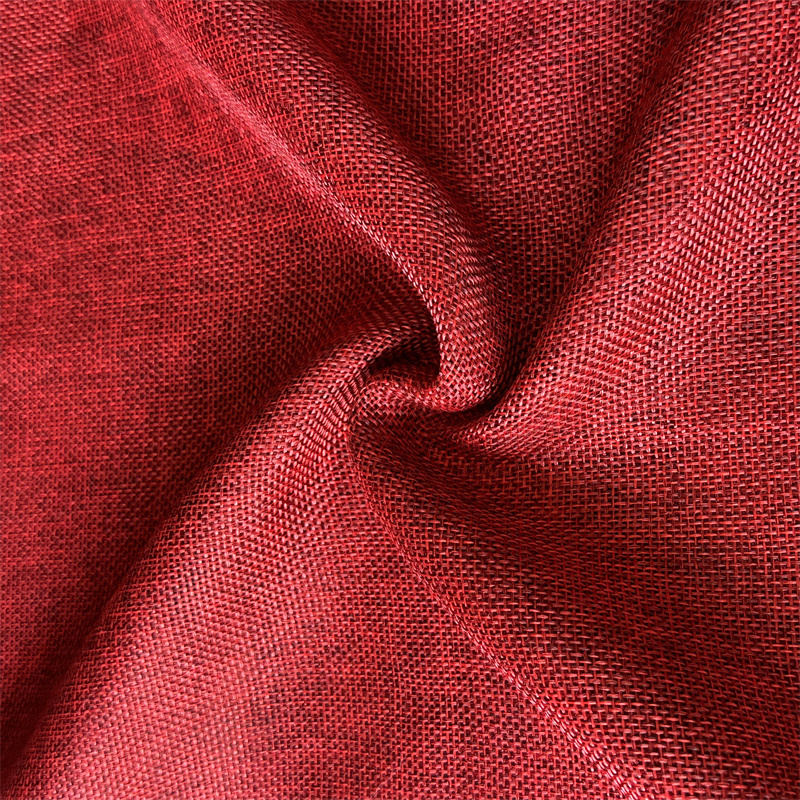
3. Wrinkle Resistance of Polyester Linen Fabric
One of the most notable challenges of pure linen is its tendency to wrinkle. Polyester linen blends address this issue effectively.
a. Wrinkle Resistance Mechanism
- Polyester fibers are hydrophobic and elastic, helping the fabric retain its shape after folding or stretching.
- Linen fibers, although prone to creasing, are partially stabilized by polyester, reducing deep wrinkles and permanent creases.
- The degree of wrinkle resistance depends on the polyester-to-linen ratio: higher polyester content generally improves wrinkle performance.
b. Practical Implications
- Polyester linen garments require less frequent ironing compared to pure linen.
- Fabrics maintain a neater appearance throughout the day, making them suitable for office wear, uniforms, and travel clothing.
- For home textiles like curtains and tablecloths, wrinkle resistance ensures clean lines and low-maintenance presentation.
Polyester linen strikes a balance between natural texture and low-maintenance convenience, making it appealing for modern consumers.
4. Factors Affecting Durability and Wrinkle Resistance
Several factors influence the performance of polyester linen fabric:
a. Fiber Ratio
- Higher polyester content increases durability and wrinkle resistance.
- Higher linen content enhances breathability, softness, and natural aesthetics, but reduces wrinkle resistance.
b. Weave Type
- Tighter weaves improve abrasion resistance and reduce fraying.
- Looser weaves enhance breathability but may be more prone to wrinkling.
c. Finishing Treatments
- Heat-setting, calendaring, or resin finishing can stabilize fibers, further improving wrinkle resistance.
- Anti-wrinkle coatings may be applied to enhance shape retention in apparel.
d. Care Practices
- Proper washing, drying, and storage influence longevity and appearance.
- Blended fabrics maintain durability and wrinkle resistance better than pure linen when following recommended care instructions.
5. Care and Maintenance for Longevity
Proper care enhances both durability and wrinkle resistance:
a. Washing
- Wash in cold or warm water using mild detergent.
- Avoid high temperatures that can damage polyester fibers or shrink linen fibers.
b. Drying
- Air drying is preferred to prevent excessive shrinkage.
- Machine drying on low heat is acceptable for polyester-rich blends but may still cause minor creasing.
c. Ironing
- Polyester linen generally requires light to moderate ironing, using steam as needed.
- Iron on low to medium heat to avoid damaging fibers or finishes.
d. Storage
- Store garments folded or hung to reduce pressure creases.
- Avoid overcrowding in closets to maintain smooth fabric surfaces.
By following proper care practices, polyester linen fabric retains its durability and wrinkle-resistant properties over time.
6. Applications Benefiting from Durability and Wrinkle Resistance
a. Apparel
- Workwear, casual clothing, office attire, dresses, and travel-friendly garments benefit from low-maintenance wrinkle resistance and durability.
b. Home Textiles
- Curtains, cushion covers, tablecloths, and upholstery require abrasion resistance and minimal creasing for aesthetic and functional longevity.
c. Outdoor and Hospitality Use
- Polyester linen blends are suitable for restaurant table linens, hotel furnishings, and event decorations where repeated use and frequent washing are expected.
The fabric’s combination of strength, ease of care, and natural appeal makes it versatile across multiple applications.
7. Sustainability Considerations
- Polyester linen blends combine renewable linen fibers with synthetic polyester.
- Fabrics with higher linen content can reduce synthetic dependency and environmental footprint.
- Proper care extends the lifespan of garments and textiles, reducing waste compared to fast-wearing pure synthetics.
While polyester is not biodegradable, the blend’s durability reduces the need for frequent replacement, contributing indirectly to sustainability.
8. Summary of Key Performance Characteristics
| Feature | Polyester Linen Fabric | Pure Linen | 100% Polyester |
| Durability | High | Moderate | Very High |
| Abrasion Resistance | High | Moderate | Very High |
| Wrinkle Resistance | Moderate to High | Low | Very High |
| Care Requirements | Low to Moderate | High | Low |
| Breathability | Moderate | High | Low |
| Aesthetic Appeal | Natural texture, smooth finish | Natural, crisp texture | Smooth, synthetic look |
Polyester linen fabric provides a balance of natural beauty and functional performance, excelling in durability and wrinkle resistance compared to pure linen while retaining more natural characteristics than pure polyester.
9. Conclusion
Polyester linen fabric has emerged as a versatile and practical choice for modern textiles, combining the best features of polyester and linen. Its performance in terms of durability and wrinkle resistance makes it ideal for applications that require both aesthetics and functionality, from apparel to home furnishings.
Key takeaways include:
- Durability: Polyester linen resists tearing, abrasion, and color fading, making it suitable for high-use items.
- Wrinkle Resistance: The polyester content reduces creasing, minimizing ironing and maintenance efforts.
- Balanced Care: Proper washing, drying, and storage further enhance the fabric’s longevity.
- Versatile Applications: Suitable for clothing, upholstery, curtains, and commercial use.
By choosing polyester linen fabric, consumers and designers enjoy a low-maintenance, durable, and stylish textile that combines the natural appeal of linen with the performance advantages of polyester. Its reliability in everyday use ensures that garments and home textiles retain shape, appearance, and longevity, meeting the needs of both modern lifestyles and high-traffic applications.


 中文简体
中文简体 Español
Español